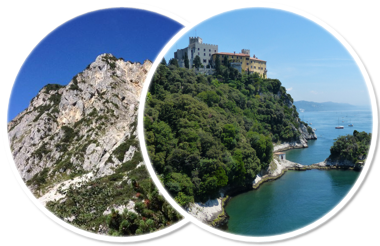
© Dipartimento di Scienze della Vita, Università degli Studi di Trieste
Andrea Moro
Distributed under CC BY-SA 4.0 license.
|
|
|
La nappola minore è una pianta annua a vasta distribuzione eurasiatica oggi divenuta subcosmopolita, presente in tutte le regioni d’Italia salvo che in Valle d'Aosta e forse in Umbria. La distribuzione regionale si estende dalle coste all'alta pianura friulana con alcune stazioni sino ai fondivalle del settore alpino; in Carso la specie non è comune e si concentra nell'Isontino e nel Muggesano, con alcune stazioni lungo la costa. Cresce in vegetazioni ruderali, nelle discariche, ai margini delle strade, su suoli argillosi freschi, ricchi in humus e composti azotati, al di sotto della fascia montana. Il nome generico, dal greco 'xanthós' (giallo), deriva dall'uso per tingere i capelli in biondo, riferito già da Dioscoride; il nome specifico deriva da 'struma' (gozzo, ulcera), e si riferisce all'antico uso nella medicina popolare. Forma biologica: terofita scaposa. Periodo di fioritura: luglio-ottobre. |
Nome italiano: Nappola brasiliana (Italia), Nappola minore (Italia).
|

© Department of Life Sciences, University of Trieste
Andrea Moro
London, Royal Borough of Kensington and Chelsea, Chelsea Physic Garden, Greater London, England, United Kingdom
23/08/2019
Distributed under CC BY-SA 4.0 license.
|

© Department of Life Sciences, University of Trieste
Andrea Moro
London, Royal Borough of Kensington and Chelsea, Chelsea Physic Garden, Greater London, England, United Kingdom
23/08/2019
Distributed under CC BY-SA 4.0 license.
|

© Department of Life Sciences, University of Trieste
Andrea Moro
London, Royal Borough of Kensington and Chelsea, Chelsea Physic Garden, Greater London, England, United Kingdom
23/08/2019
Distributed under CC BY-SA 4.0 license.
|

© Department of Life Sciences, University of Trieste
Andrea Moro
London, Royal Borough of Kensington and Chelsea, Chelsea Physic Garden, Greater London, England, United Kingdom
23/08/2019
Distributed under CC BY-SA 4.0 license.
|

© Department of Life Sciences, University of Trieste
Andrea Moro
London, Royal Borough of Kensington and Chelsea, Chelsea Physic Garden, Greater London, England, United Kingdom
23/08/2019
Distributed under CC BY-SA 4.0 license.
|

© Department of Life Sciences, University of Trieste
Andrea Moro
London, Royal Borough of Kensington and Chelsea, Chelsea Physic Garden, Greater London, England, United Kingdom
23/08/2019
Distributed under CC BY-SA 4.0 license.
|

© Department of Life Sciences, University of Trieste
Andrea Moro
London, Royal Borough of Kensington and Chelsea, Chelsea Physic Garden, Greater London, England, United Kingdom
23/08/2019
Distributed under CC BY-SA 4.0 license.
|

© Department of Life Sciences, University of Trieste
Andrea Moro
London, Royal Borough of Kensington and Chelsea, Chelsea Physic Garden, Greater London, England, United Kingdom
23/08/2019
Distributed under CC BY-SA 4.0 license.
|

© Department of Life Sciences, University of Trieste
Andrea Moro
London, Royal Borough of Kensington and Chelsea, Chelsea Physic Garden, Greater London, England, United Kingdom
23/08/2019
Distributed under CC BY-SA 4.0 license.
|

© Hortus Botanicus Catinensis - Herb. sheet 000461
|

© Hortus Botanicus Catinensis - Herb. sheet 020883
|

© Hippolyte Coste - Flore descriptive et illustrée de la France, de la Corse et des contrées limitrophes, 1901-1906 - Public domain - copyright expired.
|

© Herbarium: WU-Kerner 0085925 – Source: http://herbarium.univie.ac.at/database/detail.php?ID=973679
|
|

